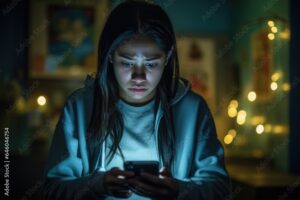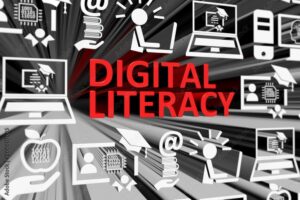In today’s digital age, social media is everywhere—it shapes how we connect, learn, and think. While these platforms offer incredible opportunities for communication and education, they also present serious challenges, especially for our youth. This post draws on insights from two compelling documentaries, The Social Dilemma and The Sextortion of Amanda Todd, to explore how educators can address the complex world of social media in the classroom.
“If you’re not paying for the product, then you’re the product.” (The Social Dilemma)

“In the next 10 years, we could be looking at the next civil war” (The Social Dilemma)

Let those quotes sink in. These insights reveal an irony: those warning us about social media’s impact helped create the very algorithms driving it.
Insights from the Documentaries
The Social Dilemma: Unmasking the Digital Landscape
The Social Dilemma reveals the hidden mechanisms behind social media platforms, showing how algorithms are designed to capture attention and shape behaviour. It questions the ethical responsibilities of tech companies that profit from these practices, prompting viewers to reconsider how deeply these systems influence everyday life. (Chat Gpt)
The Sextortion of Amanda Todd: A Cautionary Tale
In contrast, The Sextortion of Amanda Todd tells a personal, heartbreaking story about the dangers of cyberbullying and online harassment. Amanda Todd’s experience illustrates the severe emotional toll that online exploitation can take, highlighting the urgent need for education and robust support systems to protect vulnerable individuals. (Chat Gpt)
A Closer Look: Two Takes on Social Media’s Impact
In both videos, I witnessed how social media—platforms where you share your identity and connect with people worldwide—can negatively affect users. Consider this quote from The Social Dilemma: “Social media is a marketplace that trades exclusively in human futures.” Watching The Sextortion of Amanda Todd drove this point home. Amanda’s tragic story shows how an addiction to online validation can lead to devastating consequences. Cyberbullying and extortion impact far too many young people, especially girls, and this is a reality we must prevent among our students, family members, and friends.
In the context of education, social media is a double-edged sword, offering both connection and risk. It’s essential to acknowledge these challenges as we work to safeguard and support our students in the digital age.
So what can teachers, families, and caregivers do to help their young person navigate this tricky world we are living in?? Leave a Comment below to add to the below suggestions.
Practical Classroom Strategies
Integrating these lessons into your teaching approach can make a significant difference:
-
Digital Literacy Curriculum:
Incorporate modules that explain how social media platforms work, including the role of algorithms and data collection. Use clips from both documentaries as discussion starters to engage students in critical analysis.
-
Interactive Activities:
Organize debates, role-playing exercises, and case studies that explore the pros and cons of social media. These activities can help students develop a balanced perspective and enhance their problem-solving skills.
-
Creating a Safe Environment:
Establish classroom policies that promote respectful online interactions. Provide students with resources and support systems to address issues like cyberbullying and privacy concerns. 
Addressing Ethical and Practical Challenges
Integrating social media into educational settings is not without its challenges. Balancing digital engagement with the need for privacy and safety requires careful planning. To my fellow educators, I implore you to be mindful of diverse student experiences and ensure that their approaches are inclusive and ethically sound. By staying informed and adaptable, teachers can navigate these complexities while fostering a supportive learning environment.
How do you think educators can best balance social media’s opportunities with its risks in the classroom? Share your experiences and ideas in the comments!







Leave a Reply